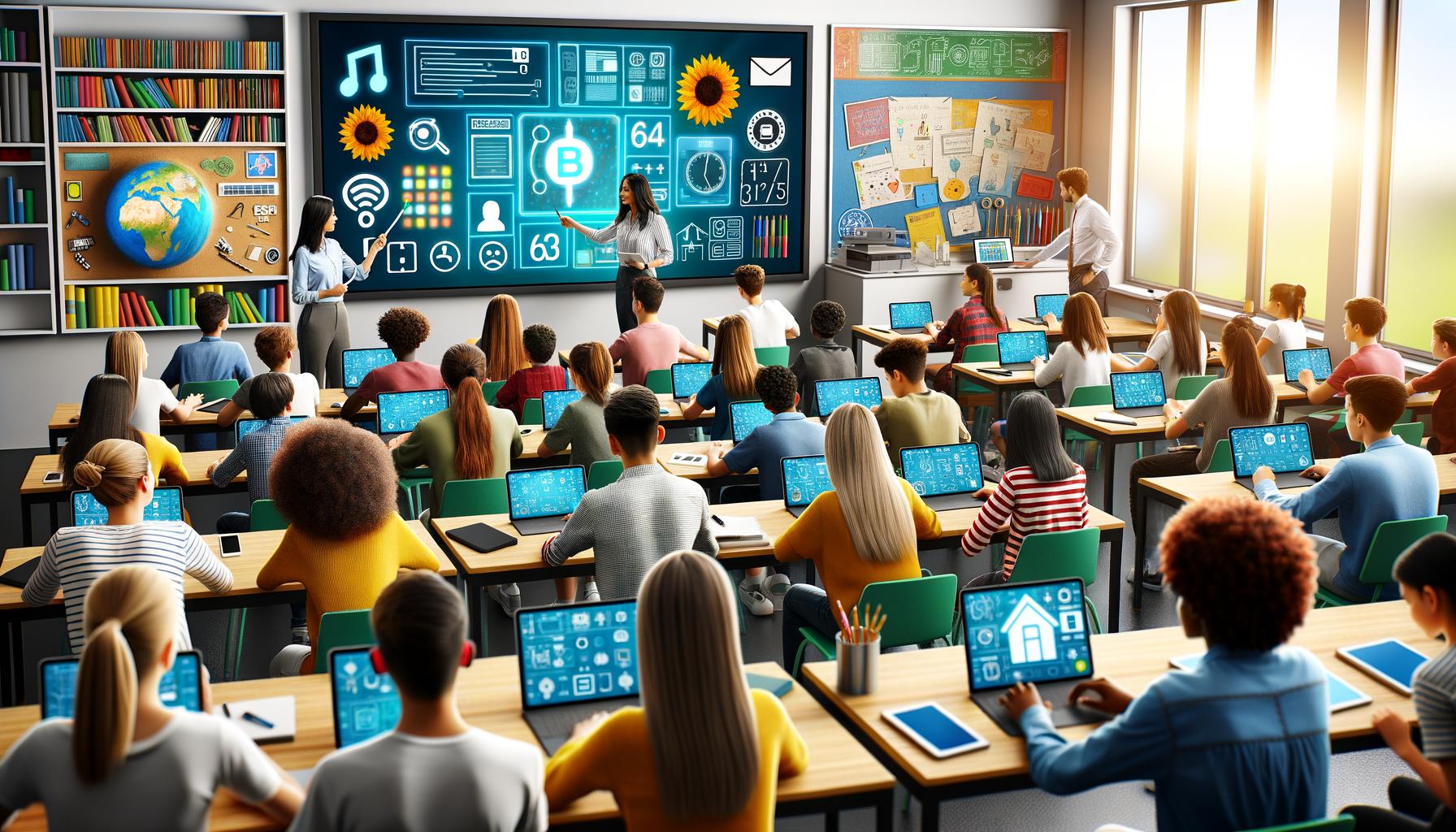The Digital Classroom: A New Era of Learning
Technology has revolutionized the way we learn and teach. The traditional classroom setting is evolving into a dynamic, digital space that offers a wealth of opportunities for both students and educators.
How Technology Enhances Learning
Personalized Learning: Technology allows educators to tailor lessons to individual student needs and learning styles. Adaptive learning platforms can automatically adjust the difficulty level of assignments, ensuring that each student is challenged appropriately.
Interactive Learning: Digital tools such as interactive whiteboards, simulations, and virtual reality experiences can make learning more engaging and immersive. Students can actively participate in the learning process, rather than passively receiving information.
Collaborative Learning: Online platforms and collaboration tools enable students to work together on projects, share ideas, and learn from each other, fostering a sense of community and cooperation.
Accessibility: Technology can break down barriers to education, making learning accessible to students with disabilities or those who live in remote areas.
Lifelong Learning: Online courses and educational apps provide opportunities for lifelong learning, allowing individuals to continue their education beyond formal schooling.
Challenges and Considerations
While technology offers numerous benefits, it’s important to address potential challenges:
Digital Divide: Ensuring equitable access to technology for all students is crucial.
Teacher Training: Educators need to be equipped with the skills and knowledge to effectively integrate technology into their classrooms.
Screen Time: Excessive screen time can have negative impacts on students’ physical and mental health.
Cybersecurity: Protecting student data and preventing cyberattacks is essential.
The Future of Education
As technology continues to advance, we can expect even more innovative and transformative approaches to education. Some potential future trends include:
Artificial Intelligence: AI-powered tutoring systems can provide personalized support to students, helping them to learn at their own pace.
Virtual and Augmented Reality: Immersive learning experiences can transport students to different times and places, enhancing their understanding of complex concepts.
Blockchain Technology: Blockchain can be used to create secure and transparent records of student achievements, making it easier for institutions to verify credentials.
By embracing technology and addressing its challenges, we can create a future where education is more accessible, engaging, and effective for all.
The Role of Technology in Education:
The integration of technology into education has ushered in a new era of learning, transforming traditional classrooms into dynamic and interactive spaces. Let’s delve deeper into the specific ways technology is reshaping education:
Personalized Learning
Adaptive Learning Platforms: These platforms use AI to tailor instruction to each student’s needs, adjusting the pace and complexity of content to optimize learning outcomes.
Data-Driven Insights: By analyzing student performance data, educators can identify areas where students may be struggling and provide targeted support.
Enhanced Collaboration
Online Collaboration Tools: Platforms like Google Classroom, Microsoft Teams, and Zoom enable students to collaborate on projects, share ideas, and engage in discussions, regardless of their physical location.
Virtual and Augmented Reality: These technologies create immersive learning experiences that foster teamwork and problem-solving skills.
Accessibility and Inclusion
Assistive Technology: Tools like screen readers, speech-to-text software, and braille displays can help students with disabilities access educational materials and participate in learning activities.
Language Translation Tools: These tools can break down language barriers and make education accessible to students from diverse linguistic backgrounds.
Lifelong Learning
Massive Open Online Courses (MOOCs): MOOCs offer flexible and affordable learning opportunities for people of all ages, empowering them to acquire new skills and knowledge.
Microlearning: Short, focused learning modules can be delivered through mobile apps and online platforms, making it easier for busy individuals to learn on the go.
Challenges and Considerations
Digital Divide: Ensuring equitable access to technology for all students remains a significant challenge.
Teacher Training: Educators need ongoing training to effectively integrate technology into their classrooms.
Screen Time: Balancing screen time with other activities is important to prevent negative health impacts.
Cybersecurity: Protecting student data and preventing cyberattacks is crucial.
The Future of Education
As technology continues to evolve, we can anticipate even more innovative approaches to education. Some potential future trends include:
AI-Powered Tutoring: AI-powered tutors can provide personalized support to students, answering questions, explaining concepts, and offering feedback.
Blockchain Technology: Blockchain can be used to create secure and transparent records of student achievements, making it easier for institutions to verify credentials.
Neurotechnology: By measuring brain activity, neurotechnology can provide real-time insights into student learning and engagement.
By embracing technology and addressing its challenges, we can create a future where education is more accessible, engaging, and effective for all learners.
